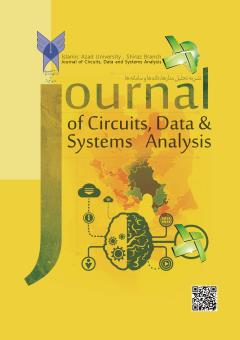Improving stability of microgrids using adaptive sliding mode controller
Subject Areas : Power Engineering and Energy Management
1 - Department of Electrical Engineering, Shiraz Branch, Islamic Azad University, Shiraz, Iran
Keywords: Microgrid, stability, adaptive sliding mode contr,
Abstract :
Today, microgrids are an important part of smart distribution networks, which include all kinds of renewable energy production sources and can operate either connected or disconnected from the main grid. Microgrid controllers play the most important role for the satisfactory automatic operation and control of the microgrid during operation in grid-connected and islanded mode. By adjusting the production capacities of scattered energy sources, the grid controller can increase the stability of the microgrid in the event of a short circuit error, switching and other disturbances.In this article, the stability of the microgrid in the grid-connected state is investigated when disturbances and additional harmonics are applied as a result of disconnection and connection moment or when the state changes from the island state to the grid-connected state. For this purpose, a control scheme based on adaptive sliding model has been proposed. Also, to show the resistance and efficiency of the control system, the Lyapunov stability analysis method has been used. The simulation results show that the interference caused by the interference in the microgrid inverter and the disturbance effect have been removed and the tracking has been obtained with high accuracy
[1] Rey J.M, Jiménez-Vargas I, Vergara P.P, Osma-Pinto G, and Solano J, “Sizing of an autonomous microgrid considering droop control,” International Journal of Electrical Power & Energy Systems, vol. 136, 2022. #
[2] Shafiee-Rad M, Sadabadi M. S, Shafiee Q, and Reza Jahed-Motlagh M, “Modeling and robust structural control design for hybrid AC/DC microgrids with general topology,” International Journal of Electrical Power & Energy Systems, vol. 139, no. 4, Jul. 2022. #
[3] Chaspierre G, Panciatici P, and Van Cutsem T, “Control of a battery energy storage system to compensate for ADN equivalents inaccuracies,” Electric Power Systems Research, vol. 213, no. 6, Dec. 2022.#
[4] Lin F.J, Tan K.-H, , and Tseng T.-Y, “Development of intelligent controlled microgrid for power sharing and load shedding,” IEEE Transactions on Power Electronics, vol. 37, no. 7, pp. 7928–7940, 2022.#
[5] Zhang M, Xu Q, Zhang C, Nordstrom L, and Blaabjerg F. “Decentralized coordination and stabilization of hybrid energy storage systems in DC microgrids,” IEEE Transactions on Smart Grid, vol. 13, no. 3, pp. 1751–1761, May 2022.#
[6] George A, Ravindran A, Mendieta M, and Tabkhi H, “Mez: an adaptive messaging system for latency-sensitive multi-camera machine vision at the IoT edge,” IEEE Access, vol. 9, pp. 21457–21473, 2021#
[7] Huang P, Vorobev P, M. Hosan Vi, Kirtley J. L , and Turitsyn K, "Plug-and-Play Compliant Control for Inverter-Based Microgrids," IEEE Trans. On Power Sys., vol. 34, no. 4, pp. 2901-2913, 2019.#
[8] Nandanoori S. P, Kundu S, Du W, Tuffner F. K , and Schneider K. P, "Distributed Small-Signal Stability Conditions for InverterBased Unbalanced Microgrids," IEEE Trans. On Power Sys., vol. 35, no. 5, pp. 3981-3990, 2020.#
[9] Sharma R. K, Mishra S and Pullaguram D, "A Robust H∞ Multivariable Stabilizer Design for Droop Based Autonomous AC Microgrid," IEEE Trans. On Power Sys., vol. 35, no. 6, pp. 4369-4382, 2020.#
[10] Tenti P, Caldognetto T, “Master/Slave Power-Based Control of Low-Voltage Microgrids,” Advanced Control Methods and Renewable Energy System Integration, pp. 101-135, 2018.#


